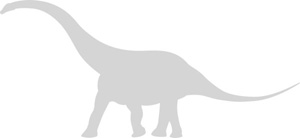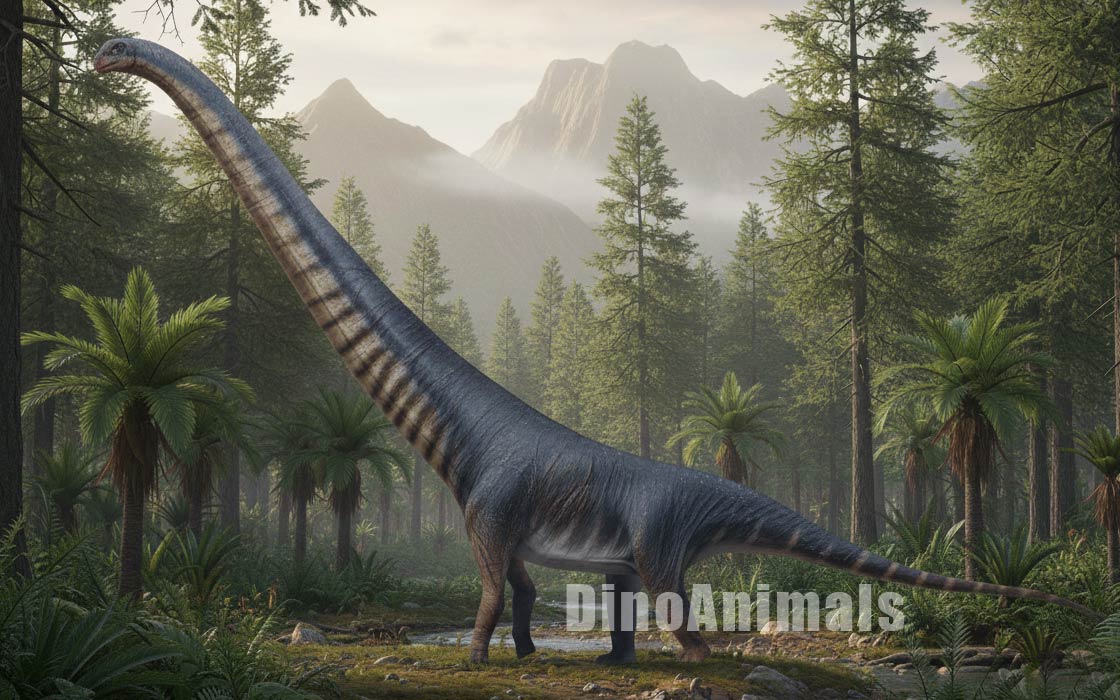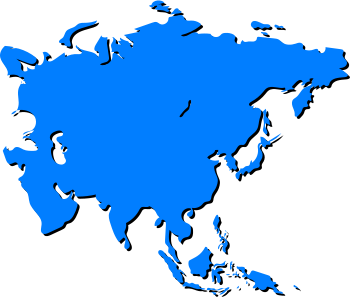Every month, 100,000 readers use the Dinosaur Database, but we receive no support from you. Developing and updating the database requires a lot of work. If you want it to remain open and be updated, please support us via the "Buy us a coffee" button available on every page or via the Support page.
Dinosaur: Tongnanlong zhimingi

| Length*: | 26 m | 85.3 ft |
| Weight*: | 32 t | 70,548 lb |
*The largest known specimen
Description
Tongnanlong zhimingi
Tongnanlong zhimingi is a gigantic eusauropod dinosaur from the Late Jurassic period of what is now southwestern China. Discovered in the Suining Formation of the Sichuan Basin, it represents a new genus and species within Mamenchisauridae—a clade of long-necked sauropods that flourished in East Asia during the Jurassic. The genus name refers to Tongnan District, Chongqing, and the species name honors Chinese paleontologist Dong Zhiming.
This taxon is characterized by unique features of the dorsal and caudal vertebrae, scapula, and coracoid, distinguishing it from other mamenchisaurids. Its massive size and complex skeletal adaptations contribute valuable insights into sauropod gigantism and faunal evolution in the Late Jurassic.
Geographic location
The fossil site in Dafo Street, Tongnan District, Chongqing, China.
Physical Characteristics
Tongnanlong zhimingi was a massive quadrupedal herbivore and one of the largest known mamenchisaurid sauropods. The holotype specimen includes a nearly complete left scapula measuring 182 cm (71.7 inches), a right fibula measuring 103 cm (40.6 inches), several dorsal and caudal vertebrae, pelvic fragments, and articulated metatarsals and pedal claws. Although the cervical vertebrae and skull are missing, the preserved postcranial elements allow for robust inferences about the animal’s size.
Estimates based on comparisons of its scapula and fibula with other mamenchisaurids suggest a body length of approximately:
- Length: 25–26 meters (82–85 ft)
- Estimated weight ~26–32 metric tons (57,300–70,500 lb)
The scapula alone measured 182 cm (71.7 inches), and the fibula 103 cm (40.6 inches). These proportions indicate a larger individual than Mamenchisaurus youngi or M. hochuanensis.
In the original description (Wei et al., 2025), the authors compared the scapula and fibula of Tongnanlong to several taxa, including Mamenchisaurus youngi, M. hochuanensis, Omeisaurus tianfuensis, and Yuanmousaurus jiangyiensis. This yielded a wide estimated body length of 24.5 to 28 meters (80–92 feet), depending on the comparison taxon. However, this range reflects extrapolations across different body plans, especially in the length and posture of the neck, which varies significantly among mamenchisaurids and omeisaurids.
A more precise and conservative estimate can be obtained by scaling directly from Mamenchisaurus youngi, which is:
- ~16 meters (52.5 feet) long, and
- has a scapula measuring ~120 cm (47.2 inches).
With Tongnanlong’s scapula being 182 cm, or about 1.52× longer, the most proportionally supported estimate yields a body length of ~23–24 meters (75.5–78.7 feet). This method is especially reliable because the skeletal reconstruction in the original paper also uses M. youngi as a reference template.
As for mass, although the authors did not provide a numerical estimate, we can infer it by comparing to sauropods of similar size and build. Based on volumetric reconstructions of M. youngi and other mamenchisaurids, which yield masses of ~14–18 metric tons (30,900–39,700 lbs), and assuming ~1.5× scaling, Tongnanlong would weigh approximately 26–28 metric tons (57,300–61,700 lbs). This range reflects a high, but not extreme, mass for a long-bodied, relatively gracile sauropod.
More extreme size estimates (e.g., over 30 tons or 28 meters long) could be possible by comparison with Xinjiangtitan or Mamenchisaurus sinocanadorum, but in the absence of cervical vertebrae or limb bones, such extrapolations carry high uncertainty.
Key anatomical traits include:
- Opisthocoelous dorsal vertebrae with camerate internal structures
- Deep, vertically subdivided pleurocoels on dorsal centra
- Anterior caudal vertebrae with procoelous centra and unique fossae between postzygapophyses and hyposphene
- Complex spinopostzygapophysial laminae and fossae
- S-shaped scapula–coracoid suture, not seen in most related taxa
- Highly developed acromial ridge and quadrilateral coracoid
- Metatarsals and unguals adapted for robust weight-bearing and locomotion
Diet and Feeding Habits
As a member of Mamenchisauridae, Tongnanlong was a high-browsing herbivore that likely fed on vegetation well above ground level, using its long neck to reach foliage in forest canopies or along lake margins.
Its narrow, elongated skull (though not preserved) would have supported a simple peg-like dentition, suitable for stripping leaves rather than grinding.
Habitat and Distribution
Tongnanlong lived in the Suining Formation, part of the Upper Jurassic deposits of the Sichuan Basin in southwestern China, dating to approximately 157–150 million years ago.
The paleoenvironment was a lakeshore to shallow lake system, dominated by:
- Purplish-red sandstones and mudstones
- Seasonal climate with semi-arid conditions
- Freshwater organisms (ostracods, bivalves, turtles, fish)
- Other sauropods like Mamenchisaurus anyuensis and Qijianglong
This region is now recognized as a diversity hotspot for sauropods in East Asia.
Behavior and Social Structure
There is no direct evidence for behavior, but by analogy with related sauropods, Tongnanlong likely exhibited:
- Social or herd behavior, as inferred for many large sauropods
- Possible seasonal migrations in search of water and food
- Low browsing competition due to its extreme height and size
Its massive body may have served as passive defense against predators, reducing predation risk.
Discovery and Research
- Holotype specimen: TNM 0254, housed in the Tongnan Museum
- Discovered in: 1998, during construction at Dafo Street, Tongnan District
- Described in: Wei et al. (2025), in Scientific Reports
- Material includes: three dorsal vertebrae, six caudal vertebrae, complete scapula and coracoid, partial tibia, complete fibula, metatarsals, claws
Phylogenetic analysis confirms Tongnanlong as a derived mamenchisaurid, more closely related to Mamenchisaurus and Chuanjiesaurus than to Omeisaurus.
Significance and Notable Facts
- Possibly the largest mamenchisaurid discovered to date, with the largest known scapula
- Adds to the growing evidence of mamenchisaurid diversity during the Late Jurassic
- Demonstrates complex vertebral pneumaticity and laminae structure, contributing to sauropod gigantism studies
- Supports the non-endemic status of Mamenchisauridae across Asia and possibly Africa
Conclusion
Tongnanlong zhimingi was a monumental representative of the Late Jurassic sauropod fauna in China. Its enormous size, unique anatomical traits, and phylogenetic position illuminate the evolutionary history of Mamenchisauridae. This taxon reinforces the Sichuan Basin’s role as a center of sauropod diversity and offers critical insights into sauropod biology and biogeography in the Late Mesozoic.
Locations
Sources
Material: Three dorsal vertebrae, six caudal vertebrae, scapula, coracoid, fibula, partial tibia, three metatarsals, two pedal unguals
References: Wei, X.; Tan, Y.; Jiang, S.; Ding, J.; Li, L.; Wang, X.; Liu, Y.; Wei, G.; Li, D.; Liu, Y.; Peng, G.; Zhang, S.; Lao, C. (2025). "A new mamenchisaurid from the Upper Jurassic Suining Formation of the Sichuan Basin in China and its implication on sauropod gigantism"




